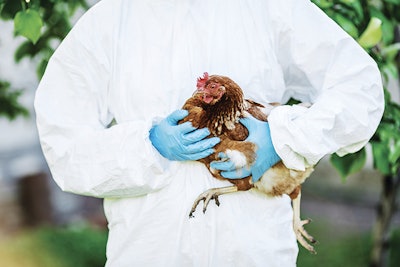
Modern veterinary care in poultry facilities should be focused on the prevention, control and surveillance of infectious diseases, Mark Bienhoff, explained at the 2020 International Production & Processing Expo (IPPE) on Wednesday, January 29, in Atlanta, Georgia.
“I’m not the same veterinarian I was when I when graduated. I was taught diagnosis and treatment where you go in and treat the animal once it is already sick,” Bienhoff, the Pathogen Control Team Leader at Kemin Animal Nutrition and Health, said during the Foreign Animal Disease session, presented by the American Feed Industry Association (AFIA). “We cannot control infectious disease epidemics if we do not understand how they behave.”
The next human pandemic?
More than 70% of emerging human pathogens worldwide are zoonotic – which means that they can be easily transmitted between humans and animals.
Health officials at the Centers for Disease Control and Prevention (CDC) are currently monitoring an outbreak of one zoonotic disease, the coronavirus, that was first identified in Wuhan, China. Confirmed cases of the coronavirus have been diagnosed in more than 28 countries. Preliminary research suggests that the probable animal source of the outbreak is the pangolin, a long-snouted mammal used in in traditional Chinese medicine.
Measures of prevention
The One Health approach – a concept that recognizes the health of people is connected to the health of animals and the environment – is going to become more important in the coming years, Bienhoff noted.
“What happens to the animals can happen to us,” he said. “That important to me because I’m going to feed the world and I don’t want to spread any diseases while I do it.”
Biosecurity is another important factor to prevent the spread of a disease. It’s important to think about where people go in a poultry facility. Are they tracking possible pathogens around on their work shoes? In addition, it’s important to have procedures in place to move keep dirty or possibly contaminated materials away from uninfected birds.
“We want to keep disease out or animal facilities. Or if it’s already in your facility, we want to stop it there or lower the opportunity it can move somewhere else,” Bienhoff concluded.
View our continuing coverage of the coronavirus/COVID-19 pandemic.
Like what you just read? Sign up now for free to receive the Poultry Future Newsletter.


















